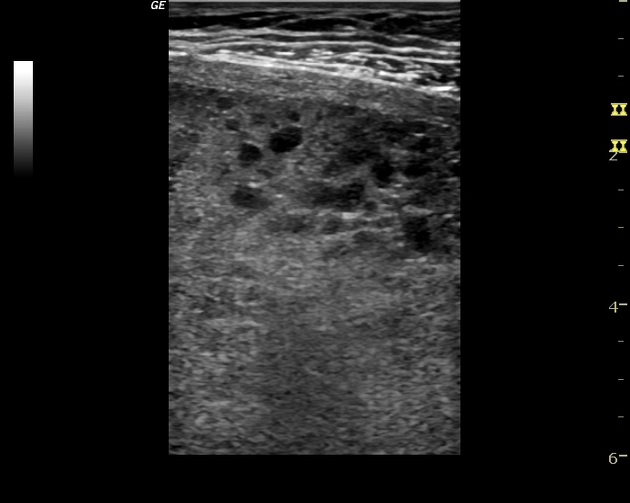retained products of conception
Retained products of conception (RPOC) refer to the persistence of placental and/or fetal tissue in the uterus following delivery, termination of pregnancy or a miscarriage.
Epidemiology
RPOC complicate ~1-5% of all routine vaginal deliveries .
According to one prospective study, RPOC was present in after a third-trimester delivery in around 2.7% of women, whereas it was diagnosed in pregnancies ending during the second and first trimesters in 40% and 17%, respectively .
It occurs with greater frequency with:
- medical termination of pregnancy (MTP)
- second-trimester miscarriage
- placenta accreta
Clinical presentation
Common symptoms include vaginal bleeding and abdominal or pelvic pain, similar to patients with gestational trophoblastic disease. Some patients may have fever .
Differentiation of these entities is important because retained products of conception are treated conservatively or with curettage, while gestational trophoblastic disease may require chemotherapy.
ß-human chorionic gonadotropin (beta-hCG) remains elevated in patients with gestational trophoblastic disease but falls to an undetectable level over 2-3 weeks, in cases of retained products.
Radiographic features
Ultrasound
Ultrasound is typically the first-line investigation in suspected retained products of conception:
- a variable amount of echogenic or heterogeneous material within the endometrial cavity
- in some instances, this may present like an endometrial or intrauterine mass
- presence of vascularity within the echogenic material supports the diagnosis but the absence of color Doppler flow has a low negative predictive value because retained products of conception may be avascular
- calcification may be present
Retained products of conception can be suspected on ultrasound if the endometrial thickness is >10 mm following dilatation and curettage or spontaneous abortion (80% sensitive).
MRI
MRI appearance is variable, and consists of soft tissue within the endometrial cavity, which may be variably enhancing. There may be variable degree of associated myometrial thinning and obliteration of the junctional zone.
Signal characteristics include :
- T1: variable heterogeneous signal
- T2: variable heterogeneous signal
- T1 C+ (Gd): variable enhancement
Differential diagnosis
For ultrasound appearances consider:
- normal postpartum appearance
- blood clot within the endometrial cavity (often co-exists): non-vascular on color Doppler ultrasound
- endometritis
- gestational trophoblastic disease
- uterine arteriovenous malformation (if prominent blood flow is present)
See also
Siehe auch:
- gestational trophoblastic disease
- Endometritis
- Abortus incompletus
- intrauterine blood clot
- arteriovenöse Malformation des Uterus
und weiter:
- endometrial polyp
- endometrial thickness
- pyometrium
- differential diagnosis of an enlarged uterus
- sonographic values in obstetrics and gynaecology
- early pregnancy
- per vaginal bleeding in the exam
- intra-uterine blood clot
- abnormally thickened endometrium
- placental site trophoblastic tumour
- post partum haemorrhage

 Assoziationen und Differentialdiagnosen zu retained products of conception:
Assoziationen und Differentialdiagnosen zu retained products of conception:

